Has There Ever Been a Blue Moon Eclipse
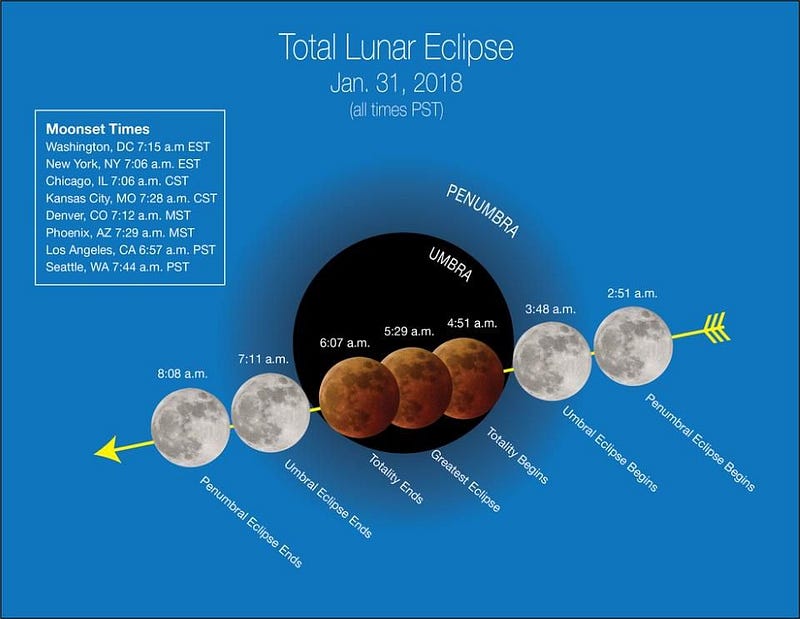
The 'big event' was billed as a first in 150 years. But is what we're seeing really that rare?
This January 31st, something quite rare and special will happen. At 1:30 PM, Universal Time (8:30 AM Eastern / 5:30 AM Pacific), the Moon will reach its full phase for the second time in the month of January, making it a blue Moon. The full Moon also occurs very close to perigee, where the Moon makes its closest approach to Earth in its elliptical orbit, occurring close enough to create a Supermoon, where the full Moon is up to 14% brighter than average. And finally, the Moon will fully slip into the Earth's shadow during this time, creating a total lunar eclipse. NASA is calling it the "Super Blood Blue Moon." For observers in North America, it's the first time all three of these phenomena will line up since 1866. But how rare is it, really, to get a Supermoon, blue Moon, and lunar eclipse all at once?
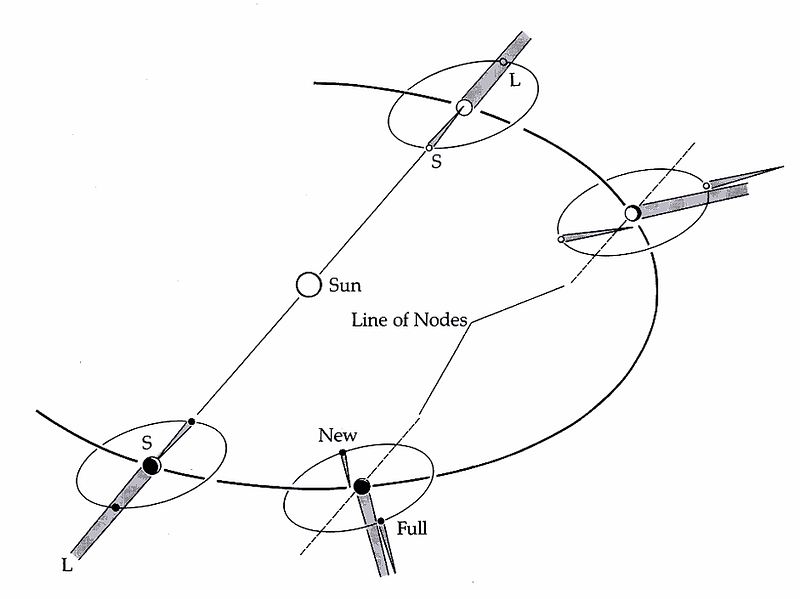
First off, it depends on where you are. Only slightly more than 50% of the Earth will get to see the lunar eclipse at all, due to the fact that you can never see a full Moon during the day. Why's that? Because when the Moon is completely full, it's on the opposite side of the Earth from the Sun; that's the way Moon phases work!
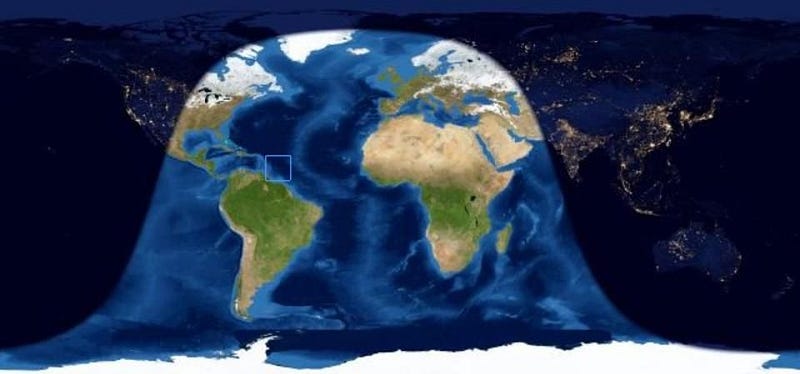
On January 31st, 2018, the full Moon will pass into Earth's shadow at 1:30 PM Universal Time, which means that skywatchers in South America, eastern North America, Africa and most of Europe will experience daytime during this event, and so won't get to see it. Asia and Australia will get it the evening of the 31st; the western US and Canada will get it before dawn on the same day. But if we look at the entire Earth, the last combination of blue Moon, Supermoon, and lunar eclipse wasn't so long ago: it happened on December 30, 1982.
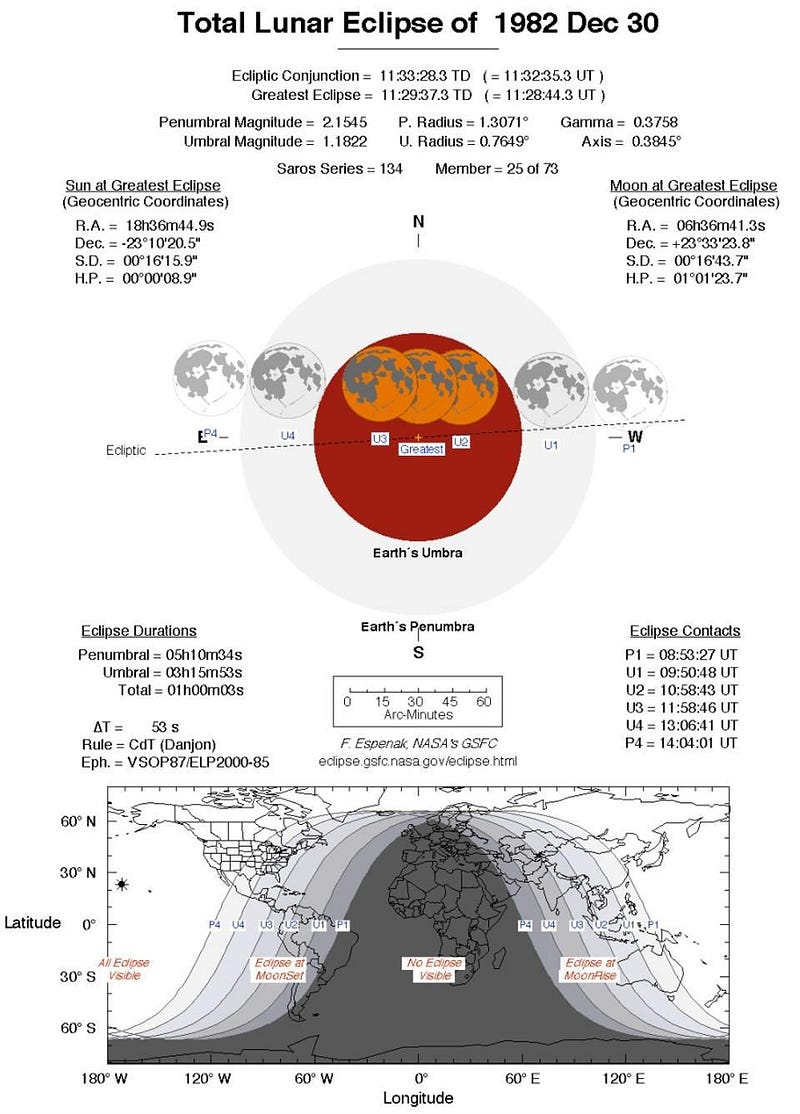
So, how frequently can we expect to experience a combination of these three events? All we have to do is figure out the probability and frequency of each one, and then combine them. Let's take a look.
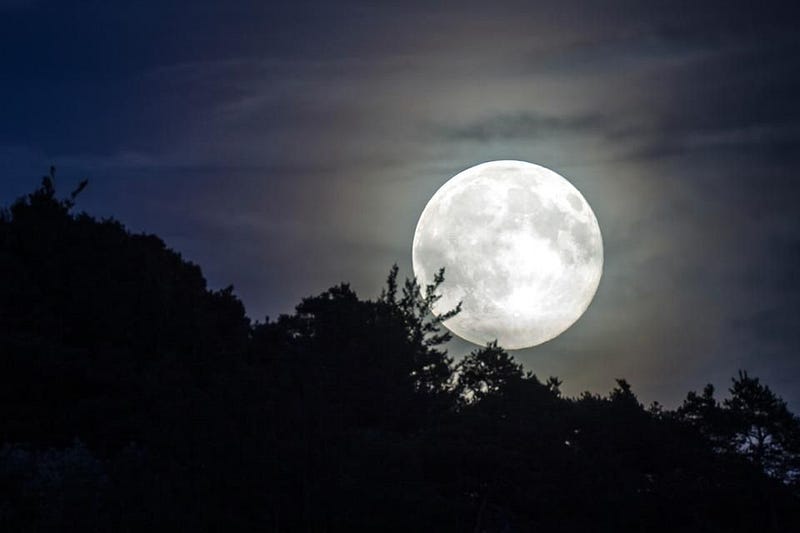
1.) Blue Moon. The phrase "once in a blue Moon" didn't enter the popular lexicon because blue Moons are common; they're definitely not! Full Moons are separated, on average, by 29.53 days, with a little bit of variation due to speed differentials in the orbits of the Earth and Moon as they revolve. When a full Moon falls on the 1st or 2nd of a month, there's an excellent chance that the next full Moon will fall on the 30th or 31st of a month, if the month has that many days. (If not, it's likely that the next month will get a blue Moon instead.)
Travel the Universe with astrophysicist Ethan Siegel. Subscribers will get the newsletter every Saturday. All aboard!
Because of how times and dates work across the world, not everyone will agree on when a blue Moon occurs; half the world saw two full Moons in August of 2012, while the other half saw two in September of 2012, depending on whether the full Moon occurred before or after 12:00 AM on September 1st of that year. And when you get a blue Moon in January, like we do this month, it's often the case that February will have no full Moons, leading to another blue Moon in March. The full Moons on March 2nd and 31st, this year, will also create a blue Moon; it's just an artifact of how our calendar is structured.
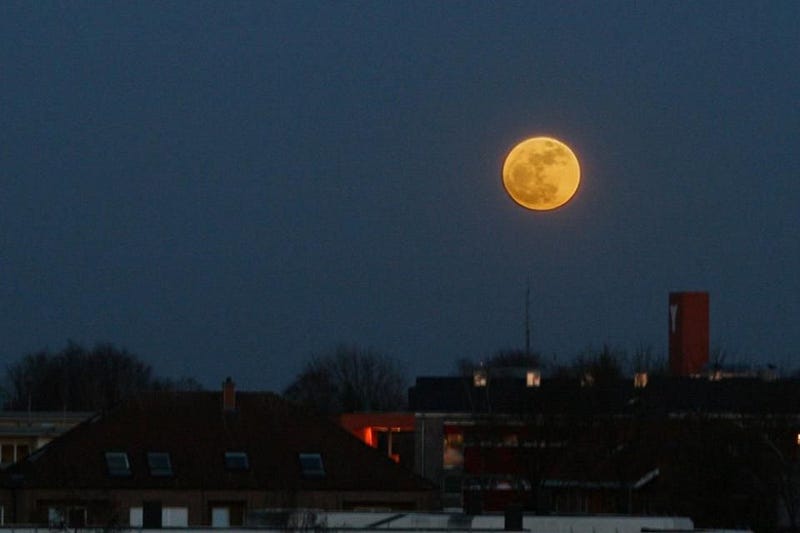
On average, however, there's one full Moon a month for every month of the year, with an extra full Moon occurring about 7 times every 19 years: a little more frequently than once every 3 years. The last blue Moon occurred on July 31st, 2015, and the next one (after March) will be October 31, 2020. All told, around 3% of all full Moons are blue Moons.
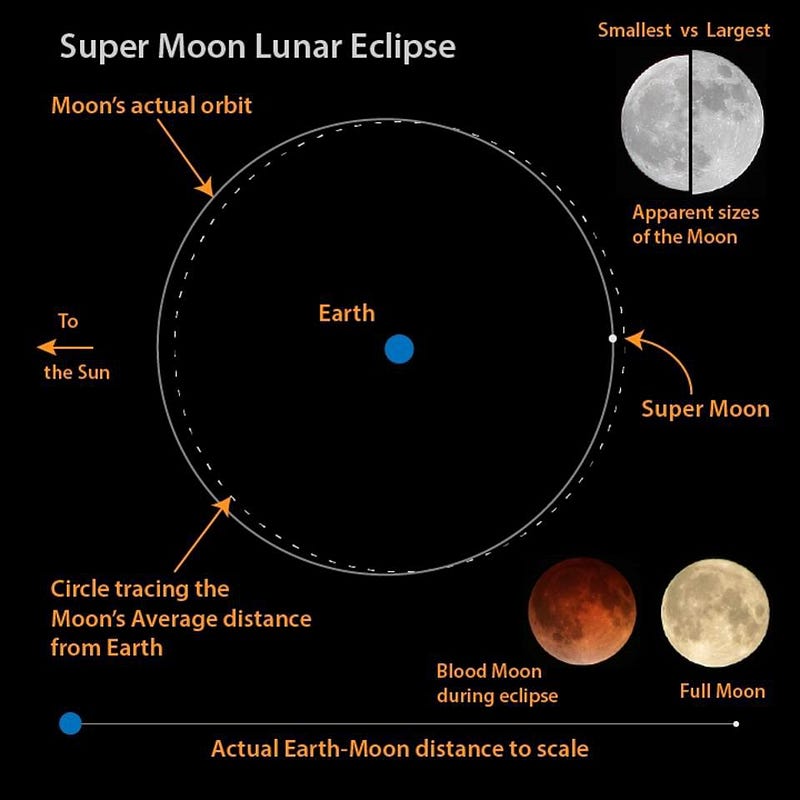
2.) Supermoon. As the Moon orbits the Earth, it not only goes through its phases, from new to full to new again, but it moves in an ellipse around the Earth. When it's farthest from Earth, at apogee, it can reach distances as great as 406,700 km from our center; at perigee, its closest approach, it can get as close as only 356,400 km away. When a full Moon phase and a perigee (or near-perigee) place in its orbit coincide, we call that a Supermoon.
As you may have noticed over the past few years, Supermoons aren't all that rare, as we get about 3–4 of them in a year, depending on whose definition you use. Typically, a full Moon that's closer than 359,000 km (or, alternatively, 360,000 km) will be known as a Supermoon, and we usually get around 3 of them consecutively due to the intricacies of the orbits of the Sun, Earth and Moon. As a shining example, the previous two full Moons, on January 2nd, 2018 and December 3rd, 2017, were also Supermoons. Approximately 25% of all full Moons are Supermoons, making their frequency not-so-super after all.
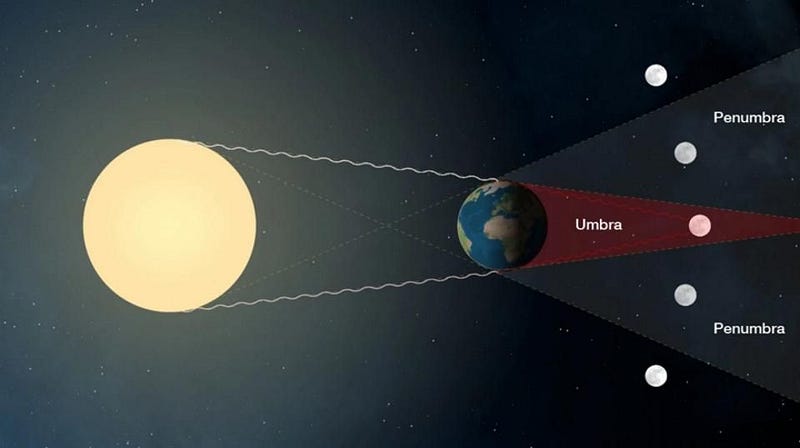
3.) Total lunar eclipse. Both the Moon and Sun take up about half a degree on the sky, but the Moon's orbital plane is inclined to the Sun-Earth plane by about 5 degrees. Only twice a year, on average, do the nodes of the Moon line up to make eclipses possible. This means, on two occasions annually, there's a chance for a total lunar eclipse. Most often, the eclipses are either partial or penumbral, but a little more than a quarter of the time, we'll get a total lunar eclipse. Over the 5,000 year period from 2000 B.C.E. to 3000 C.E., Earth will see 3,479 total eclipses, or one approximately every 18 full Moons: about 5.6% total.
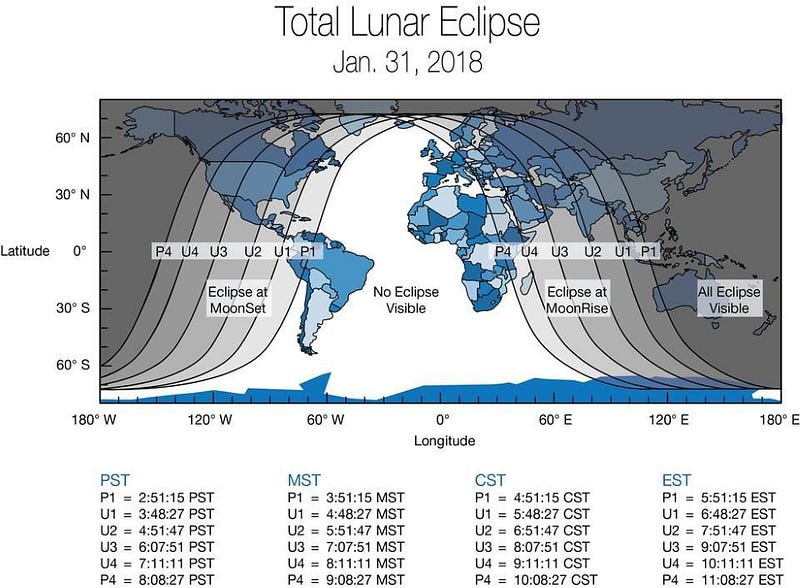
With all that, we can combine this information to arrive at how frequently we expect all of these to occur together:
- Blue Moons make up about 3% of all full Moons,
- Supermoons are approximately 25% of all full Moons, and
- Total lunar eclipses occur during 5.6% of full Moons,
meaning that a Blue, Super, totally eclipsed Moon occurs with 0.042% of full Moons: once every 2,380 full Moons or so. On average, that corresponds to once every 265 years!
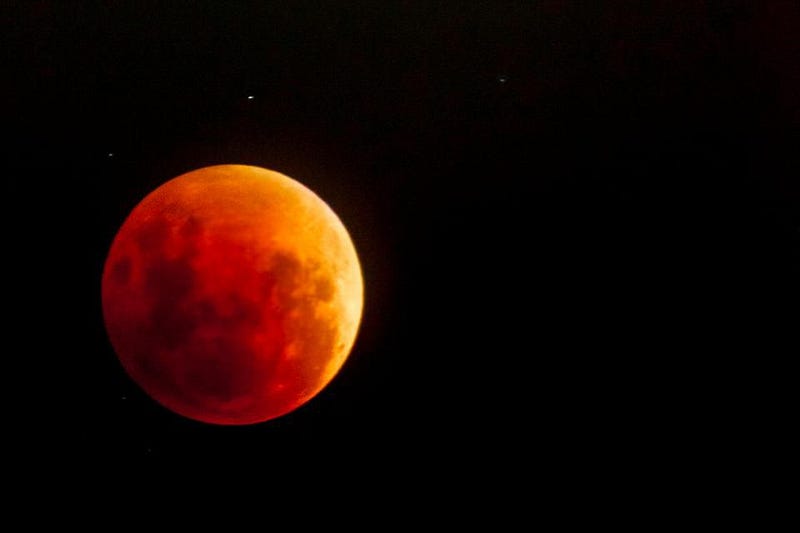
But don't fret if you don't get to see the January 31st, 2018 lunar eclipse. Supermoon total eclipses, what NASA calls a "Super Blood Moon," occur every few years, and Earth will get another one on January 21st, 2019, visible over all of North and South America. Blue Moons aren't special in any way whatsoever, except for the fact of how humans have structured our calendar. The rareness of next Wednesday's eclipse is completely arbitrary, but the sight of a big, red, eclipsed Moon is something you should never miss, so long as you have the opportunity. If your skies are clear and the Moon is visible, just use your naked eye — or a pair of binoculars for an even better show — and enjoy this wondrous event to the fullest!
Starts With A Bang is now on Forbes , and republished on Medium thanks to our Patreon supporters . Ethan has authored two books, Beyond The Galaxy , and Treknology: The Science of Star Trek from Tricorders to Warp Drive .
Source: https://bigthink.com/starts-with-a-bang/how-rare-is-the-all-in-one-supermoon-blue-moon-and-lunar-eclipse-really/
0 Response to "Has There Ever Been a Blue Moon Eclipse"
Post a Comment